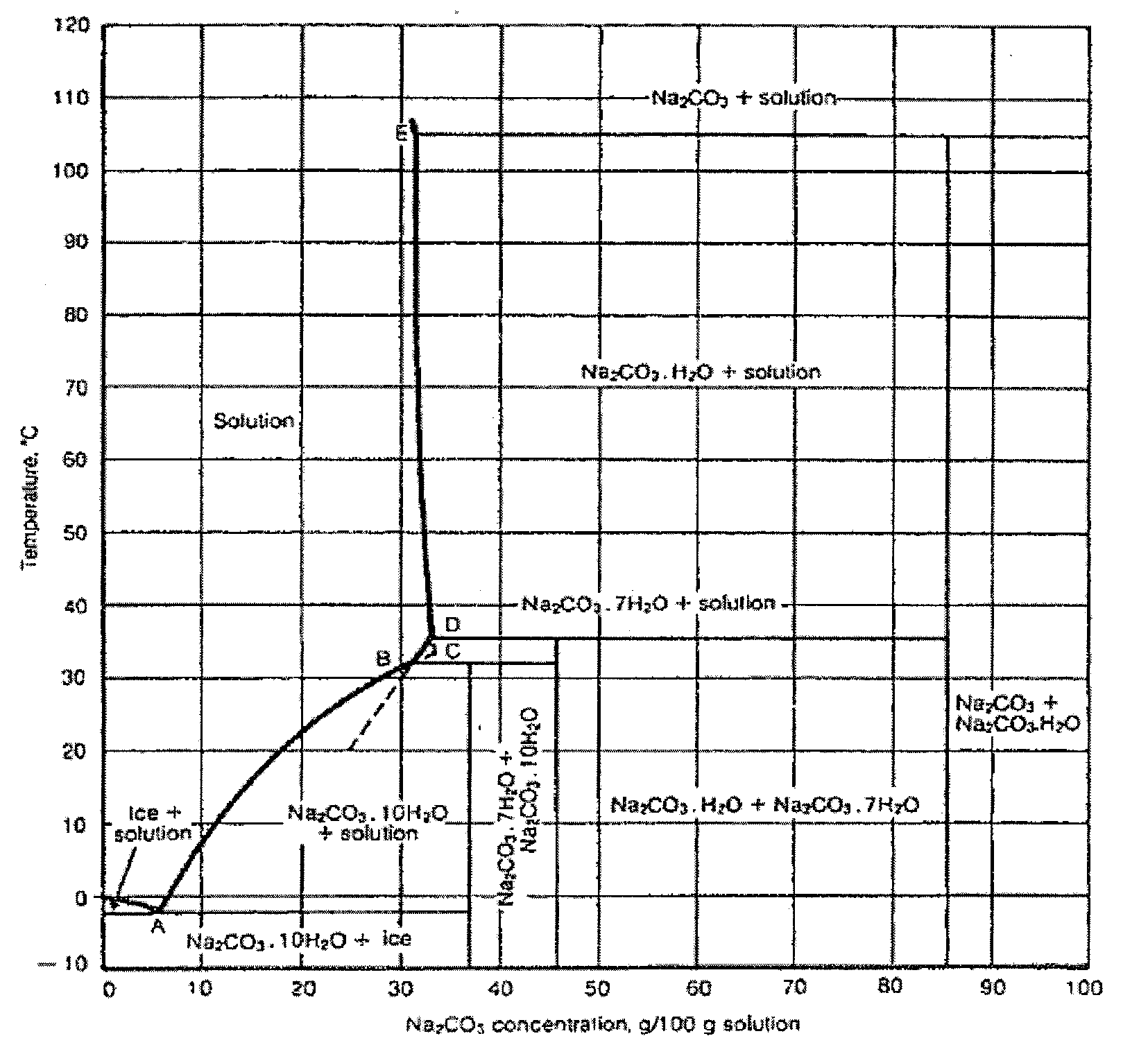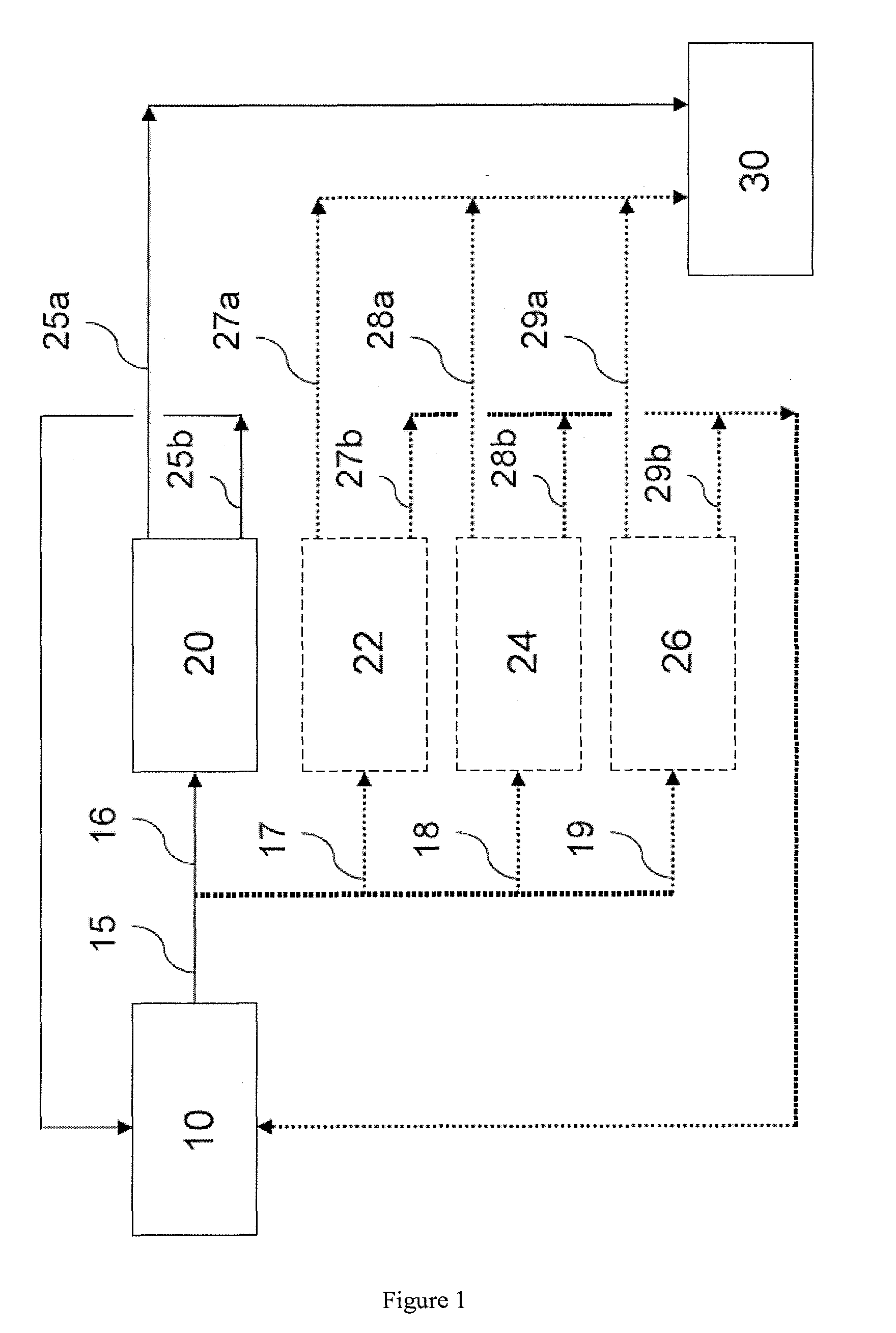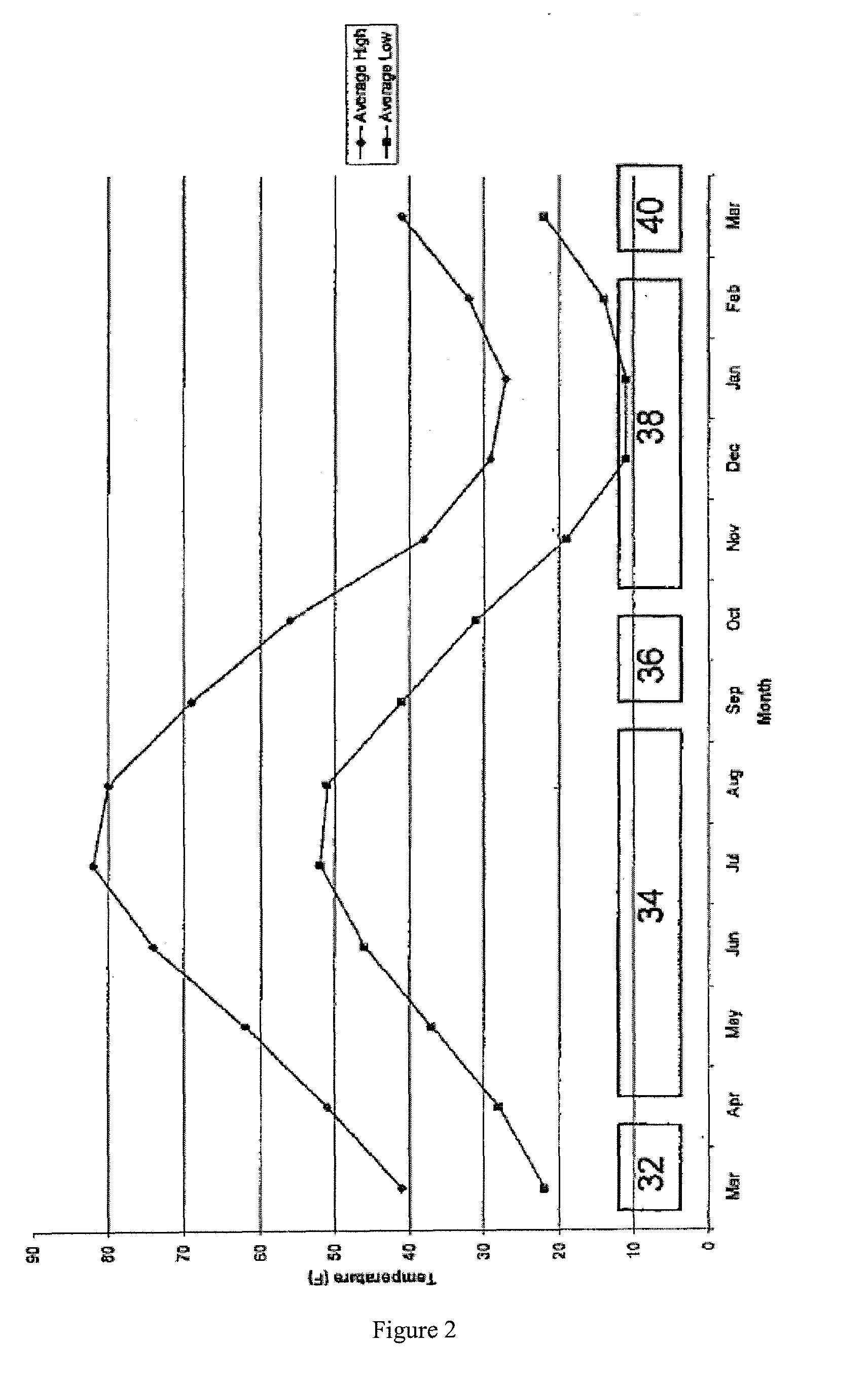Method of producing sodium carbonate decahydrate
a technology of sodium carbonate and decahydrate, which is applied in the field of sodium carbonate decahydrate production, can solve the problems of difficult removal, dense, and hardness
- Summary
- Abstract
- Description
- Claims
- Application Information
AI Technical Summary
Benefits of technology
Problems solved by technology
Method used
Image
Examples
example 1
[0062]A crystallization process for the recovery of sodium carbonate decahydrate was instituted at a soda ash plant in Green River, Wyo. A crystallization pond area (“Cell #3”) was prepared as shown in FIG. 3. The overflow from Cell #3 was directed to a trench to a second pond. Existing evaporative sodium carbonate decahydrate in Cell #3 was removed down to a hard pink layer which formed a solid base for equipment to operate on. The resulting basin provided the crystallization pond which was 4 feet deep (122 centimeters) and covered about 4.7 acres (about 19,000 m2). Effluent from a soda ash plant was pumped through a 6-inch (15.24 cm) diameter HDPE line which was 600 feet long (183 m) to a first end of Cell #3, at a rate of from 450 to 600 gal / min (about 1,700-2,270 L / min).
[0063]In a first phase of operation, an effluent from the soda ash plant was provided to the crystallization pond area over a period of 12 days in the month of December. In a second phase of operation, the efflue...
example 2
[0068]An attempt was made to use the process to recover sodium carbonate decahydrate that had previously been deposited by evaporative crystallization. A 160 foot long channel was cut through a deposit of evaporative sodium carbonate decahydrate. Plant effluent at a temperature of from 97° F. to 131° F. (36-55° C.) was distributed to a first end of the channel. The effluent stream dissolved the evaporative sodium carbonate decahydrate around the channel, widening it as the trial proceeded. An attempt to enhance this effect proceeded by using a front-end loader to transport material from the evaporative sodium carbonate decahydrate pile into the channel. The temperature of the plant effluent entering the channel was 92° F. (33.3° C.), while the temperature of the solution exiting the channel was 51° F. (10.6° C.). This decrease in temperature was caused by the endothermic reaction of the dissolution of the sodium carbonate decahydrate. The resulting solution was allowed to recrystall...
example 3
[0069]Sheets of plastic film were positioned over a section of a relatively flat and level pond area covering approximately 40 acres (about 162, 000 m2) to form a liquid-impermeable substrate. The area covered by the plastic sheets was a square approximately 100 feet (30.5 m) on each side. During a winter period, a soda ash plant effluent was discharged onto the plastic film. The effluent discharge point was located over the plastic film, which forced the effluent to spread out into a relatively thin layer as it flowed away from the discharge point. Without the plastic film, the hot effluent tended to dissolve any underlying sodium carbonate decahydrate deposits to form a pit; the liquid would then flow from that pit in a narrow, deep channel so that there was little cooling of the effluent. In contrast, the liquid layer deposited on the plastic sheet cooled relatively quickly, and crystalline sodium carbonate decahydrate started to form in relatively thin layers ranging in thicknes...
PUM
 Login to View More
Login to View More Abstract
Description
Claims
Application Information
 Login to View More
Login to View More - R&D
- Intellectual Property
- Life Sciences
- Materials
- Tech Scout
- Unparalleled Data Quality
- Higher Quality Content
- 60% Fewer Hallucinations
Browse by: Latest US Patents, China's latest patents, Technical Efficacy Thesaurus, Application Domain, Technology Topic, Popular Technical Reports.
© 2025 PatSnap. All rights reserved.Legal|Privacy policy|Modern Slavery Act Transparency Statement|Sitemap|About US| Contact US: help@patsnap.com



